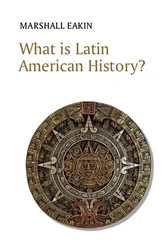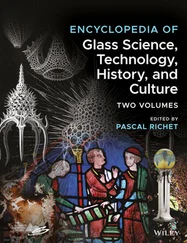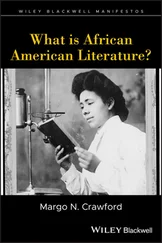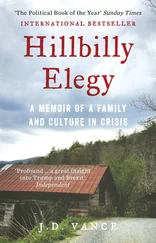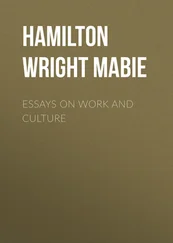As a cattle and dairy-farm owner who supplemented his income with the occasional extraction of gold, Rodríguez Freile fit into a gold economy that was beginning to depend less on agricultural goods provided by the native communities and more on those produced by small, nonindigenous farmers. These small farmers depended upon native labor, the hiring of which (with a nominal wage) was now permitted by the crown. Hence, two kinds of economic activities took place in the central region of the New Kingdom of Granada which directly involved Rodríguez Freile: diminishing gold production and increasing agriculture and commerce.
In the written history of the New Kingdom of Granada, the most apparent social force is that of encomenderos, merchants, miners, the state and its bureaucracy, and of course, the church. These kinds of Spanish and criollo characters and their vicissitudes profusely occupy, as we saw, Rodríguez Freile’s attention as well as most of the literary criticism that El carnero has received. The principal position of other social forces is less apparent in this society and its written history. This is the case of the indigenous people whose voice was seldom expressed in El carnero in any ideological formulation that resulted in an appreciation of their culture or political agency. The violent revolts during and after the conquest (such as those of the Pijao and Carare Indians – see Chapter 19) were marginalized in a portrayal of perfidious expressions of savagery; or in the case of the early conflicts with the indigenous under the encomienda system, which tended to be conceptualized inside the dominant scholastic ideology, their representation amounted (according to the Spaniards) to an improper understanding of the natives’ place in their segregated república de indios (Indian republic). A clear example is that of the cacique of Turmequé, don Diego de Torres (and his struggle against the mistreatment of his people), whom Rodríguez Freile represented as a marginal chief unduly and ineptly involved in Spanish politics ( Chapters 13–14).
Rodríguez Freile’s Opportunity as A Farmer
When the indigenous communities were first subjected to the encomienda system in the region (ca. 1538) and provided the agricultural goods needed by the Spanish population, they still lived and farmed in their ancestral lands, which at the time were largely untouched by Spanish confiscations. However, by the end of the sixteenth century, and with the demographic collapse of the indigenous population, the state aggressively encouraged the relocation and confinement of the remaining population into poblamientos (towns) and resguardos (reservations of sorts). The move was intended to break the encomenderos’ monopoly over the indigenous labor force as well as more easily control the indigenous people for religious proselytism and the Spaniards’ and criollos ’ own labor demands. This move also freed more indigenous land for the colonizers’ confiscations. El carnero illustrates this situation when dealing with president Andrés Venero de Leiva’s term in office. According to Rodríguez Freile, he “ardently encouraged the natives’ conversion by making them live close together in their towns and by supporting their churches” ( Chapter 10).
The increase in the Spanish and criollo urban population and the native’s demographic collapse broke the original balance between the needs of colonizers and the indigenous economy to satisfy them, which supported the encomienda system. The result was the emergence of the first estancias (farms juridically different from the encomienda) around the land of the encomenderos, one of which was acquired by Rodríguez Freile. In other words, the author of El carnero found his economical opportunity with the breakup of the encomendero power. And since by then the indigenous were not able to make a living by solely cultivating the small land of their resguardos, they were compelled to work in the Spaniards’ and criollos ’ farms. This was very probably Rodríguez Freile’s source of labor for his own estancia . These farms, once Spanish legislation made it easier to secure an indigenous labor force, were able to create a type of agricultural unit capable of supplying the cities and mining centers in and outside the Santafé de Bogotá area with cereals, dairy products, and root vegetables.
These intricacies of the social inequalities among Spaniards, criollos, poor mestizos, and the indigenous are totally erased in Rodríguez Freile’s self-portrait as an estanciero, an erasure that has been preserved by most nineteenth- and twentieth-century readings of El carnero . This is evident when Rodríguez Freile, paraphrasing the Latin poet Horace and resorting to a literary trope known as beatus ille (praising the charms and simplicity of country life), proudly proclaims:
Fortunate is the man who, far away from business, and with modest assets, quietly and peacefully retires; he whose nourishment is assured by the fruits of the land that he cultivates, because, as virtuous as mother nature is, it produces them; fortunate is the one who does not expect his reward from the hands of greedy and tyrannical men. ( Chapter 21)
El carnero , Its Commentators and the Indigenous Subject
The scholarly attention given to this text has stemmed in two opposite directions. On the one hand, historians such as Juan Friede, David Brading, Germán Colmenares, Julián Vargas Lesmes, and Martha Herrera Ángel – among others – have great confidence in El carnero ’s referential value. This is evident in the frequent consultations they make of it in order to illustrate historical characters as well as colonial society, politics, and culture involving both Iberian newcomers and native subjectivities. Literary critics, on the other hand, tend to dismiss or downplay El carnero ’s referentiality and have popularized the text’s current reputation as a work of fictional, impudent narratives comprising part of the Latin American literary canon. They are also the only ones who have studied the text as a whole. Most literary studies, however, have been overly concerned with El carnero ’s typological nature and with elucidating its place in that discursive formation called (European) literature. Conversely they have paid less attention to the cultural milieu in which the author lived and wrote his text, a propensity which has allowed them to overlook, for instance, the significance of the indigenous population among which the author lived and its impact in the composition and assessment of his work.
Even though scholarly approaches to colonial texts during the last quarter of a century have been altered, often with interesting results, by postmodern cultural theories (particularly cultural studies, postcolonial studies, feminism, queer theory, and subaltern studies), most studies of El carnero have not been affected by these changes. They have been faithful to the parameters of literary appreciation and have overlooked the “colonial situation” in which the text was produced, that is, the condition under which an invading European and Christian minority controlled and profited from a non-European, non-Christian majority (as Walter Mignolo explains in the Preamble to this volume). With this prevailing literary approach, the presence of the indigenous people and the author’s relation to them are missed; also missed is the regimen of colonial servitude to which the former were subjected.
Despite the visibility of the indigenous in Rodríguez Freile’s daily life and society, he managed to define El carnero exclusively as a history of Europeans and Euro- Americans: “I wanted, as best as I could, to inform others about the conquest of this New Kingdom, about what happened between the time when its first Conquistadors settled it until the present time of writing, the year 1636” ( Chapter 1); he then marginalized the indigenous subjectivity by means of a controlled and denigrating representation of it: “I have wanted to say all of this so that it would be understood that the Indians are capable of committing any evil act, that they kill men to rob them … I say all of this lest you let your guard down with them” ( Chapter 16).
Читать дальше



